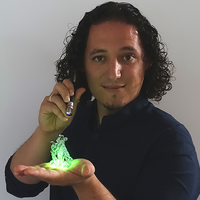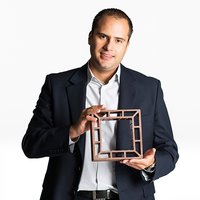An exotic mineral has emerged in the interminable human search for alternative energy sources to replace fossil fuels that could replace silicon as the go-to material for solar panels: perovskite. The unique electrical properties of this novel mineral are ideal for manufacturing sheets of light, low-cost solar sheets capable of absorbing large quantities of light. For over a decade, investigators around the world have been trying to leverage perovskite´s inherent advantages as compared to silicon, such as the ability to process this mineral at room temperature. The advances made in this field by Samuel Stranks - a career researcher at the University of Adelaide (Australia), Massachusetts Institute of Technology (MIT; US), the University of Oxford and Cambridge University (United Kingdom) – have led to his recognition as one of MIT Technology Review, Spanish edition's 35 Innovators Under 35 Europe 2017.
Other researchers have already demonstrated that perovskite panels can be imprinted on to flexible, light and even transparent substrates/materials, opening the door to a plethora of new applications: garments which integrate solar cells which charge the battery of a wearable and transparent sheets of perovskite capable of generating up to 20% more energy when installed overtop existing rooftop panels with low overhead costs (since no new cabling is required), for example. But, while the current efficiency of perovskite cells is over 22% as compared to 27% efficiency with silicon-based cells, more advances will be necessary for this mineral to transform the energy sector.
And that is precisely what Stranks intends to do. Through the use of spectroscopy techniques, Stranks has observed how lights interacts with these materials in great detail and identified how perovskite "absorbs" sunlight, freeing energized electrons in the process, and how long the electrons remain in this state. This allowed Stranks's team to "pinpoint the loss of power was happening within the solar cells, and, therefore, tactically eliminate these losses to push efficiency towards its practical limits," the young innovator explains. At the end of 2013, Stranks co-authored a paper, published in Science, about the keys to highly efficient perovskite cells which has been cited more than 3,000 times. Electrons energized by sunlight, as the article explains, can travel very long distances before losing their energy charge, and, as the authors highlighted, the efficiency of these solar cells could in time be significantly improved by "changing the manufacturing recipe."
One of the core projects in Stranks' team at the University of Cambridge involves layering two sheets of perovskite which absorb different regions of the sunlight spectrum to form a configuration known as tandem, or multi-junction, solar cells. Stranks explains that this format allows them to "push efficiencies beyond those of the leading, silicon-based technology in today's market." Unlike other solutions, like the relatively low power sheets of perovskite designed, for example, to charge smartphones, printed by the polish company SauleTech, Stranks aims to offer a very high power density thanks to this tandem configuration, allowing him to work with drone operators, amongst others. And that's not all: the light weight substrates upon which Stranks' solution is based could lower installation costs below the cost of conventional solar panels and facilitate entry into new markets which cannot be served by silicon-based technologies. In the United States, 40% of all rooftops cannot support the weight of silicon-based panels, and the same is true of developing countries, as Stranks points out. In these cases, lightweight and low-cost perovskite cells would enjoy a powerful competitive advantage.
Stranks plans to launch a spin-out within the next six to 12 months, along with colleagues from Stanford University (US) and MIT, in order to take this first "high power and lightweight solar product" to market as soon as possible. The team is currently studying licensing agreements with important photovoltaic cell manufacturers.
According to the Physics professor from the National Autonomous University of Mexico and jury member of Innovators Under 35 Europe 2017, Arturo Menchaca, Stranks´ project has enormous potential to generate an impact, while highlighting specifically his "entrepreneurial vision."
By Elena Zafra
Translation: Teresa Woods




